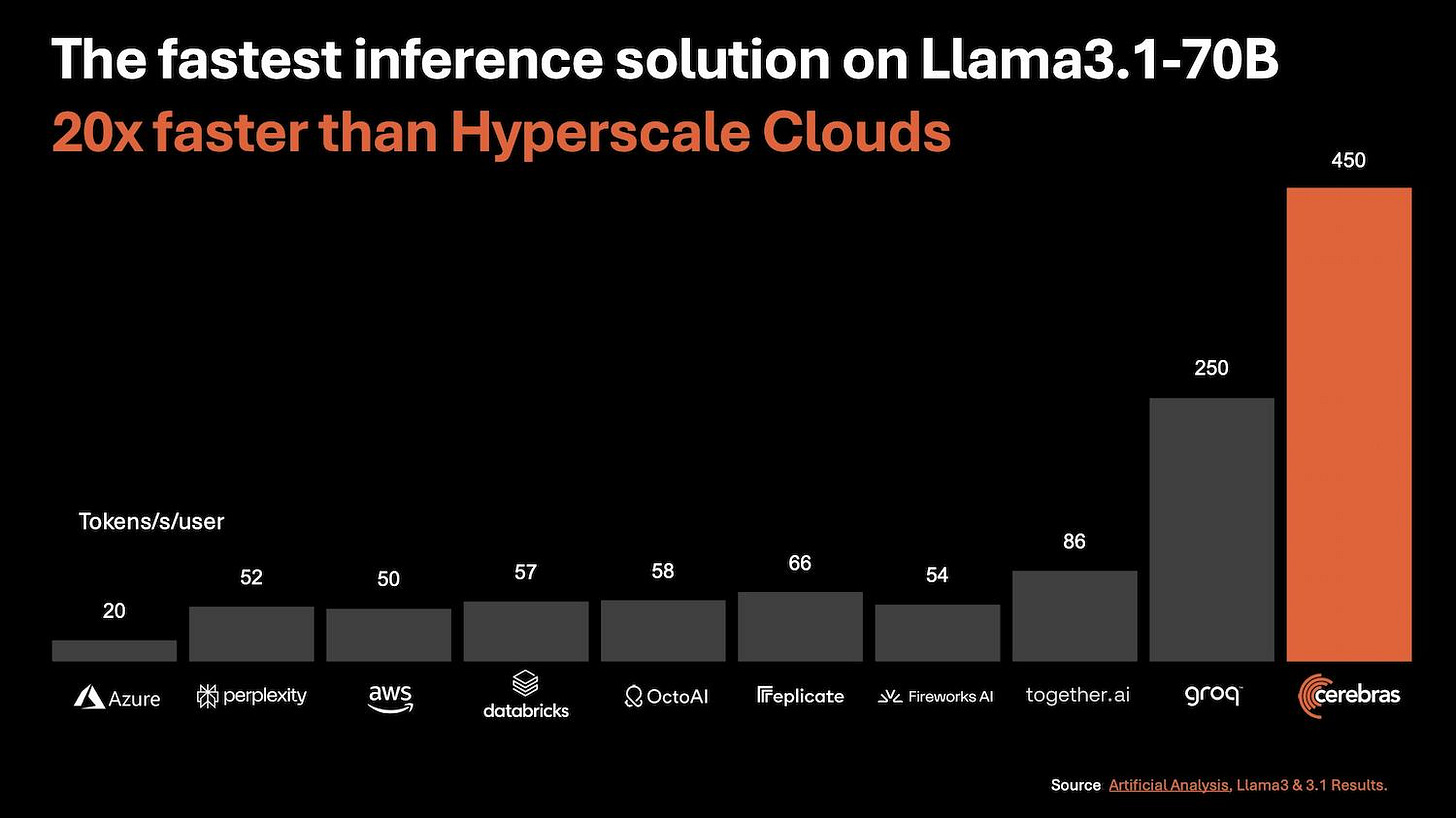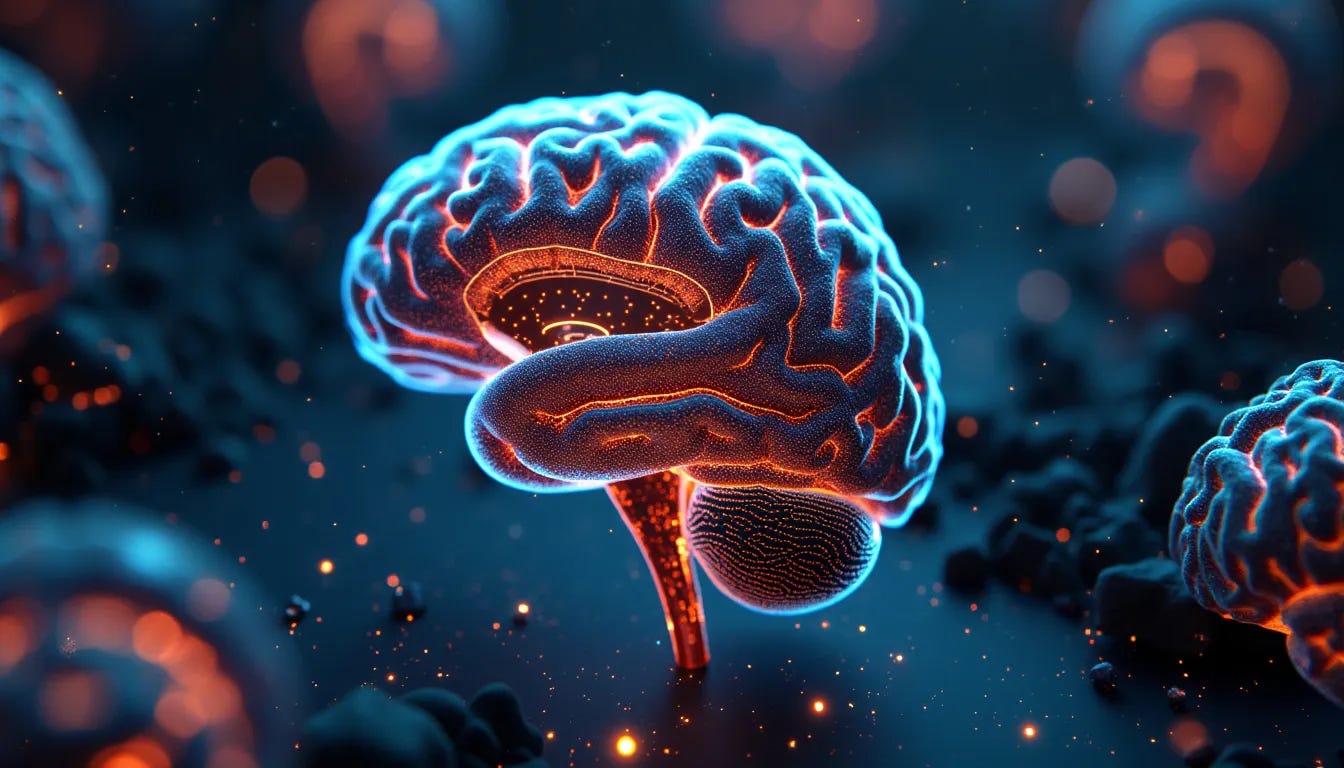👾 AI is Coming For Gaming 🍓 Strawberry is Coming! 🧠 Dementia Prediction Breakthrough
What you actually need to know about AI, weekly.
Welcome to this week in AI.
This week, we get nostalgic with an AI model that can simulate the classic game Doom.
OpenAI's Project Strawberry is finally nearing its release, and we'll check out a new chip that's breaking inference speed records.
Finally, we'll explore a new breakthrough in dementia prediction.
Are you ready?
👋 If you’re new here, welcome!
Subscribe to get your AI insights every Thursday (usually).
AI is Coming for Gaming Next: A $200 Billion Industry
Watch real-time gameplay from the model
Google researchers have created GameNGen, a neural network that can simulate the classic game Doom in real time without relying on a traditional game engine.
This marks the first time AI has fully simulated a complex video game with high-quality graphics and interactivity, running efficiently on a single TPU chip.
The transition from traditional game engines to AI-driven systems like GameNGen could transform the $200 billion gaming industry by reducing development time and costs, opening doors for smaller studios and individual creators.
Why it Matters
This breakthrough demonstrates AI's potential to generate complex interactive environments, which is not limited to gaming.
GameNGen's capabilities suggest transformative possibilities in industries like autonomous vehicles and virtual reality, where real-time simulations are essential for training, testing and operational management.
While challenges remain, GameNGen represents a step toward a future where anyone could prompt an entire playable universe into existence.
This could lead to a new era of digital entertainment with dynamically evolving environments and gameplay mechanics.
OpenAI's 'Strawberry': The Next Leap in Agentic AI, Coming Soon
OpenAI is gearing up for a late 2024 release of "Strawberry" an AI model that is designed to enable AI agents to solve multistep tasks.
Strawberry has been demonstrated to US national security officials.
It can handle subjective questions, such as product marketing strategies, and solve complex word puzzles like the New York Times' Connections
Strawberry is generating synthetic data for training Orion, OpenAI's next flagship LLM.
A smaller, distilled version of Strawberry might be integrated into ChatGPT to enhance GPT-4’s performance at a lower cost.
It’s noteworthy that we've discussed Project Strawberry (formerly Q*) multiple times before in this newsletter, OpenAI has been clever in drip feeding news and creating hype around it.
Why it Matters
Strawberry's advanced reasoning capabilities could unlock new levels of "agentic" behaviour in AI, allowing it to perform multi-step tasks autonomously.
Strawberry represents a significant step forward, bringing us closer to a future where AI can truly understand and execute complex tasks on our behalf.
AI agents will be disruptive in a way that many people don’t fully comprehend yet, agents will be able to perform the tasks of a huge array of white collar roles, potentially leading a reduction in the workforce.
📰 Article by The Information (paywall)
Neurolink Patient #2 Breaks Records Only Hours After Chip Implant
Watch Alex play Counter-Strike with his mind
Neuralink's second PRIME Study participant, Alex, has made remarkable progress using the Link brain-computer interface (BCI).
Within hours of receiving the implant, he surpassed previous BCI cursor control records and began using the Link for creative pursuits like 3D design.
This showcases the potential of the Link to enable individuals with quadriplegia to regain control over digital devices.
The study also demonstrates improvements in the Link's safety, with no thread retraction observed in Alex yet.
Why it Matters
Alex's experience highlights the real-world impact of the Link. For example, he has been able to design and 3D print a custom mount for his Neuralink charger, something he was unable to do before.
He has also regained the ability to play video games with greater control and do activates he enjoyed before his accident.
As Alex said, "The Link is a big step on the path of regaining freedom and independence for myself."
Approximately 18,000 people suffer a spinal cord injury each year in the United States. And, it's estimated that 302,000 people living in the United States have experienced a traumatic spinal cord injury - Quote from the study
📝 Neuralink's second study results
Record Breaking Inference Speeds
Cerebras Inference is setting a new standard for AI inference with its speed and cost-efficiency.
It delivers 20 times faster inference than traditional GPUs and is significantly cheaper than hyperscalers (large-scale data centers).
The secret behind this performance lies in Cerebras' solution to the memory bandwidth bottleneck that has long plagued GPUs.
By building the world's largest chip and storing the entire AI model on it, the chip eliminates the need for slow data transfers between external memory and compute units, resulting in very fast inference speeds.
It's worth noting that this chip can only run Llama 3.1 at the moment, it’s limitation is also its advantage in that the the model needs to be stored on the chip.
Why it Matters
Faster inference not only means quicker responses from AI models, but it also unlocks new possibilities for AI development and better user experiences.
Techniques like scaffolding, which dramatically improve AI performance on complex tasks, become feasible in real-time thanks to this architecture.
As AI continues to permeate various industries, the demand for faster and more efficient inference will only grow, making new chip technology increasingly valuable.
AI-Powered Dementia Prediction: A Breakthrough in Early Diagnosis
Scientists are using AI to analyse over a million brain scans in an effort to develop a tool capable of predicting an individual's risk of dementia.
This project, led by researchers at the University of Edinburgh and the University of Dundee, involves matching image data from CT and MRI scans with linked health records to identify patterns that could aid in early diagnosis.
With dementia cases projected to triple by 2050, this research holds the potential to help us address this growing health crisis.
Why it Matters
Early detection of dementia is crucial for timely intervention and improved patient outcomes.
The development of an AI-powered predictive tool could enable doctors to identify individuals at risk, leading to earlier diagnosis and the potential for more effective treatment strategies.
Moreover, this research could accelerate the development of new and more targeted therapies for dementia, offering hope to millions worldwide.
Missed the last one?
That’s a Wrap!
If you want to chat about what I wrote, you can reach me through LinkedIn.
If you liked it, I’d appreciate a share!









This is a cracking edition. It’s not just because of the nostalgic memories of playing doom but the fact you have your finger on the pulse of AI.